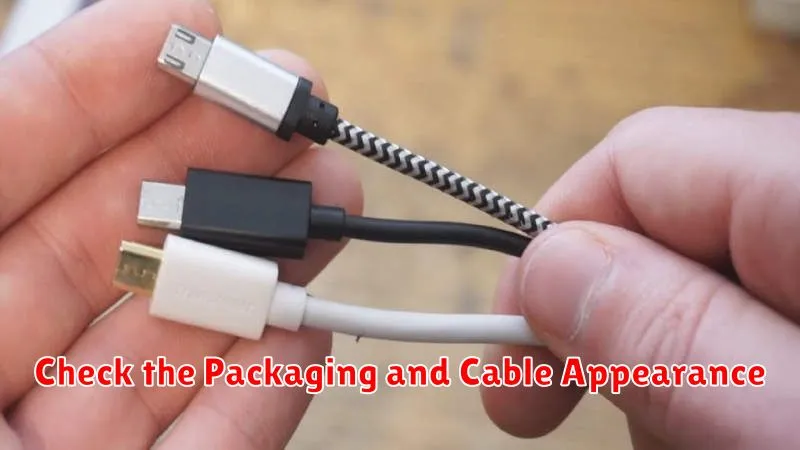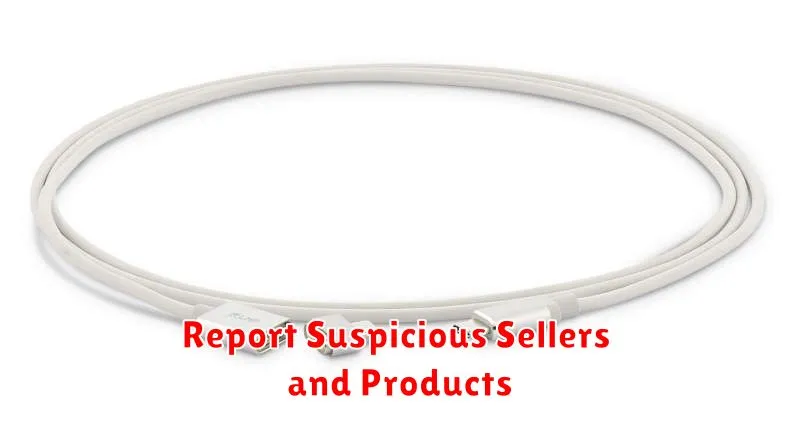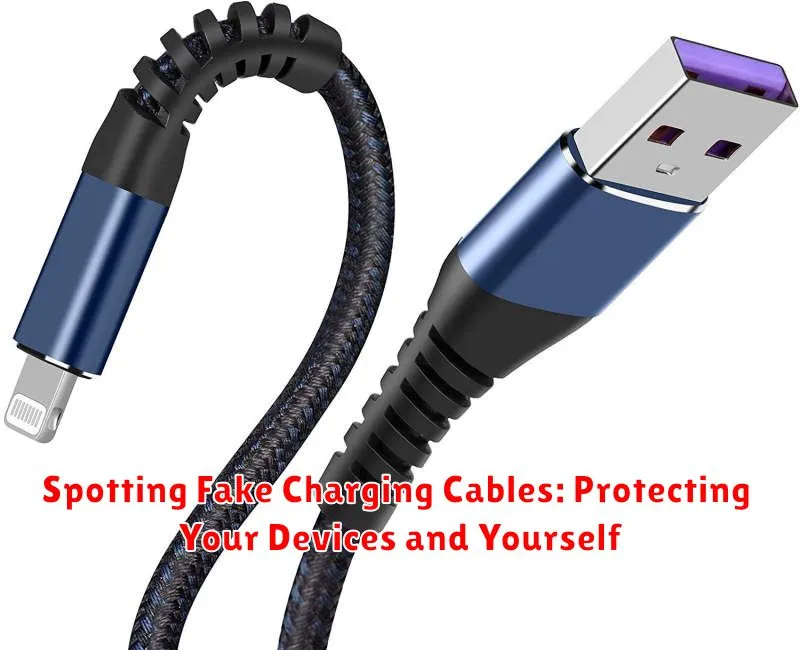Counterfeit charging cables pose a significant threat to both your valuable devices and your personal safety. Using a fake charging cable can lead to a range of problems, from slow charging and data corruption to overheating, fire hazards, and even electric shock. It is crucial to be able to identify these counterfeit cables to protect your investment in your electronics and, more importantly, to ensure your well-being. This article will provide you with the necessary knowledge to spot fake charging cables and make informed purchasing decisions.
Learning to distinguish between genuine and fake chargers is easier than you might think. By paying attention to a few key details, you can confidently identify counterfeit cables and avoid the potential dangers they present. This article outlines the telltale signs of a fake charging cable, empowering you to safeguard your devices and yourself from the risks associated with substandard accessories. From examining the physical appearance of the cable to scrutinizing packaging and vendor details, you will gain the tools you need to choose safe and reliable charging cables.
Why Fake Charging Cables Are Dangerous
Counterfeit charging cables pose significant risks to both your devices and your personal safety. These cables are often manufactured with subpar materials and lack the necessary safety features found in genuine products. This can lead to a variety of problems, ranging from device damage to fire hazards.
Overheating is a common issue with fake cables. Inferior wiring and inadequate insulation can cause the cable to overheat during charging, potentially damaging your device’s battery and internal components. In extreme cases, this overheating can lead to fires, posing a serious threat to your safety and property.
Damage to your device’s charging circuitry is another risk. Fake cables often fail to regulate the power flow correctly, which can overload your device’s charging circuits. This can lead to permanent damage, requiring costly repairs or even replacement of your device.
Data loss is also a possibility. Some counterfeit cables are designed to steal data from your device while it’s charging. This can compromise your personal information and leave you vulnerable to identity theft.
Check the Packaging and Cable Appearance

Counterfeit cables often have subpar packaging. Look for misspellings, blurred logos, or low-quality printing on the box. Genuine packaging typically feels more substantial and has a higher-quality finish.
Inspect the cable itself. Official cables generally have a consistent texture and color. Fake cables might feel rough, uneven, or flimsy. Check the cable’s markings. Legitimate manufacturers often print their name or logo subtly on the cable. Counterfeiters might omit these markings or reproduce them poorly.
Pay close attention to the length and thickness of the cable. Compare it to images of the genuine product on the manufacturer’s website. If the cable seems significantly thinner or shorter than advertised, it could be a fake.
Examine the USB Connector and Cable End
A close inspection of the USB connector and cable end can reveal telltale signs of a counterfeit cable. Genuine connectors are typically well-constructed, with a smooth, uniform finish. Look for inconsistencies like rough edges, gaps in the plastic molding, or misaligned components. Counterfeit cables often exhibit poor craftsmanship.
Pay close attention to the metal contacts within the connector. They should be cleanly finished and securely attached. Fake cables might have uneven or tarnished contacts, which can affect charging performance and potentially damage your device’s charging port. The cable end that connects to your device should also be examined for similar flaws.
Check for proper markings and logos. Official cables often have subtle markings or logos on the connector and cable end. Compare these with images of authentic cables online. Counterfeiters sometimes attempt to replicate these markings, but they may be poorly executed or inaccurate.
Compare the Price with Official Retailers
A significant price difference compared to official retailers is a major red flag. Counterfeit cables are often sold at drastically reduced prices to attract buyers. While a good deal is always tempting, exceptionally low prices for charging cables should raise suspicion. Research the typical price range for the cable you need from reputable sources. If a deal seems too good to be true, it probably is.
Check the official website of the device manufacturer or authorized retailers for their listed prices. Use these prices as a benchmark to compare against third-party sellers. A slightly lower price from a reputable retailer might be legitimate, but a dramatically lower price is often a sign of a counterfeit product. Be wary of marketplaces or online sellers offering incredibly cheap cables.
Remember, the cost of a fake cable can be much higher in the long run if it damages your device or causes a safety hazard. Investing in a genuine cable from a trusted source is a worthwhile investment for the safety and longevity of your electronics.
Test the Cable’s Performance and Charging Speed
One of the most telling signs of a counterfeit cable is its performance. A genuine cable will charge your device at the expected rate. Slow charging is a major red flag. If your device takes significantly longer to charge than usual, the cable may be restricting the power flow.
Overheating is another dangerous indicator. If the cable, the charging brick, or your device becomes excessively hot during charging, immediately discontinue use. This could be a sign of poor insulation or inadequate wiring within the fake cable, posing a fire hazard.
You can also try using the cable for data transfer. Erratic data transfer, frequent disconnections, or an inability to transfer data at all are strong indicators of a subpar, potentially dangerous cable. Counterfeit cables often cut corners on the internal wiring necessary for efficient data transfer.
Look for Certification Marks (e.g., MFi)
One of the most reliable ways to identify a genuine charging cable is to check for legitimate certification marks. For Apple devices, look for the MFi (Made for iPhone/iPad/iPod) logo. This certification indicates that the cable has been rigorously tested and meets Apple’s performance and safety standards.
Other manufacturers often have their own certification programs. Researching the specific certifications relevant to your device can help you identify genuine accessories. Counterfeit cables often lack these markings or display fake ones. Carefully examine the logo for any inconsistencies in printing or design that might suggest a forgery.
Checking for certification is a quick and easy first step in verifying the authenticity of a charging cable. While the presence of a certification mark doesn’t guarantee absolute safety, it significantly reduces the risk of purchasing a counterfeit product.
Verify the Seller’s Authenticity
Before purchasing a charging cable, take the time to investigate the seller. On online marketplaces, check the seller’s ratings, feedback, and history. Look for established sellers with a positive track record and a significant number of transactions. Be wary of newly created accounts or sellers with overwhelmingly positive reviews that seem too good to be true.
If purchasing from an online retailer, ensure the website is secure and legitimate. Look for secure connection indicators like “https” in the URL and a padlock icon in the address bar. Verify the website’s contact information and return policy. Authorized retailers for specific brands are generally a safer bet than unknown third-party sellers.
For in-person purchases, buy from reputable stores. Avoid purchasing from street vendors or unauthorized resellers. If a deal seems unbelievably cheap, it likely is. Counterfeit cables are often sold at significantly lower prices than genuine products.
Read Online Reviews and Testimonials
Before purchasing any charging cable, especially from unfamiliar brands or vendors, take the time to research what other buyers are saying. Online reviews and testimonials can offer valuable insights into the quality and safety of a product.
Look for recurring themes in the feedback. Do multiple reviewers mention overheating, slow charging, or incompatibility issues? A consistent pattern of negative experiences can be a strong indicator of a potentially counterfeit or substandard product. Conversely, consistently positive reviews can offer reassurance about the cable’s performance and safety.
Pay particular attention to reviews that discuss the cable’s durability, charging speed, and overall build quality. These are key factors to consider when assessing the legitimacy and value of a charging cable.
Be wary of overly positive reviews that seem generic or inauthentic. Look for reviews that provide specific details and experiences. Consider checking multiple platforms for reviews, as this can provide a more comprehensive understanding of the product’s reputation.
Report Suspicious Sellers and Products

If you encounter potentially counterfeit or unsafe charging cables, reporting the seller and product can help protect others from falling victim to the same scams. Reporting these instances contributes to a safer online marketplace and helps hold fraudulent sellers accountable.
Where to Report:
- The platform where you made the purchase: Most online marketplaces (e.g., Amazon, eBay) have mechanisms for reporting suspicious listings and sellers. Utilize these reporting tools to flag the product and seller in question. Provide specific details about the product, the seller, and why you believe it to be counterfeit or unsafe.
- Relevant authorities: Depending on your location, you may be able to report counterfeit goods to consumer protection agencies or other governing bodies. Research the appropriate channels in your region for reporting such instances.
- The manufacturer: If the product is purporting to be from a specific brand, informing the brand’s customer service or legal department can aid them in pursuing action against counterfeiters. This also helps the manufacturer track the scope of the counterfeit problem.
By taking the time to report suspicious sellers and products, you become an active participant in combating fraudulent practices and ensuring the safety of other consumers.

